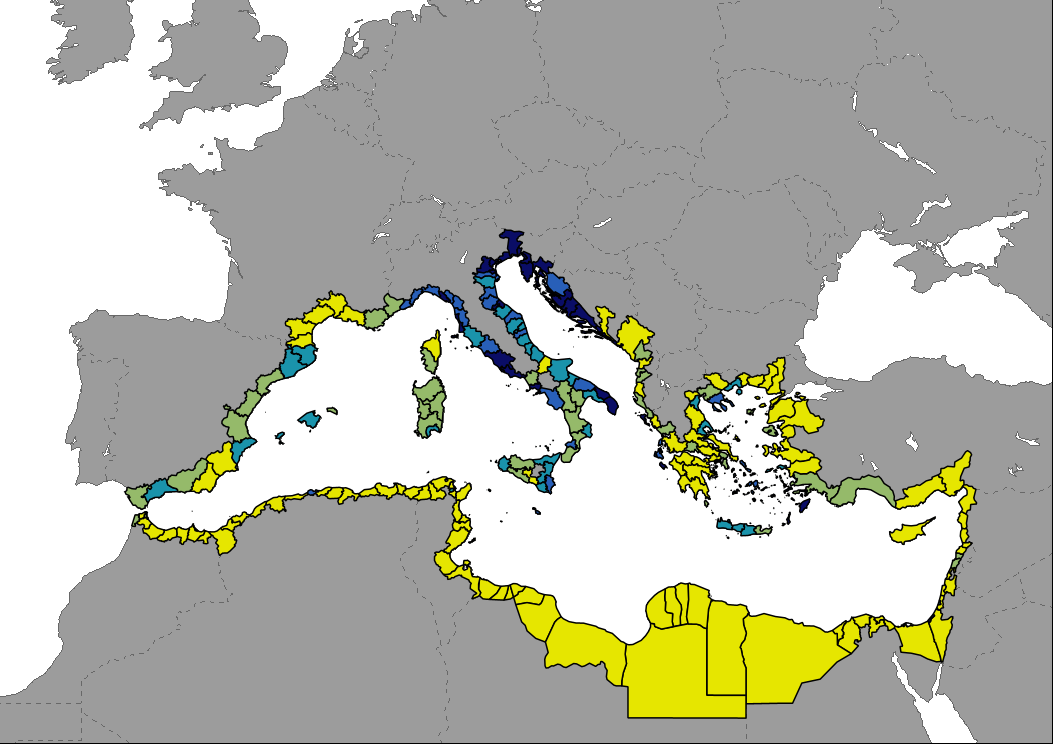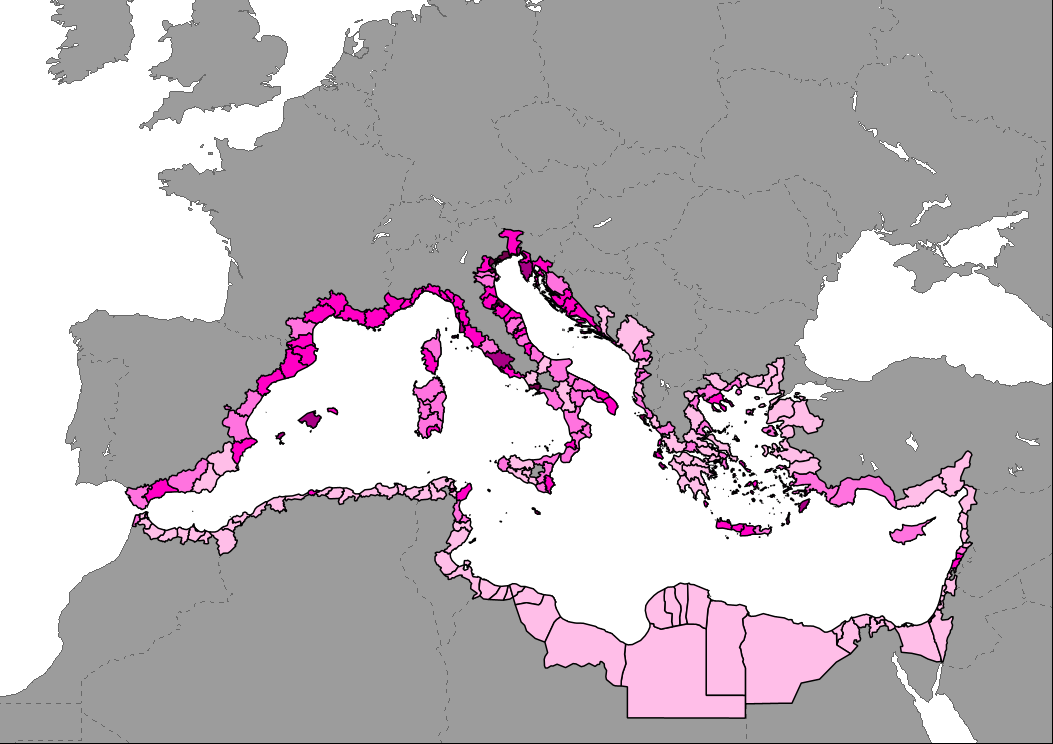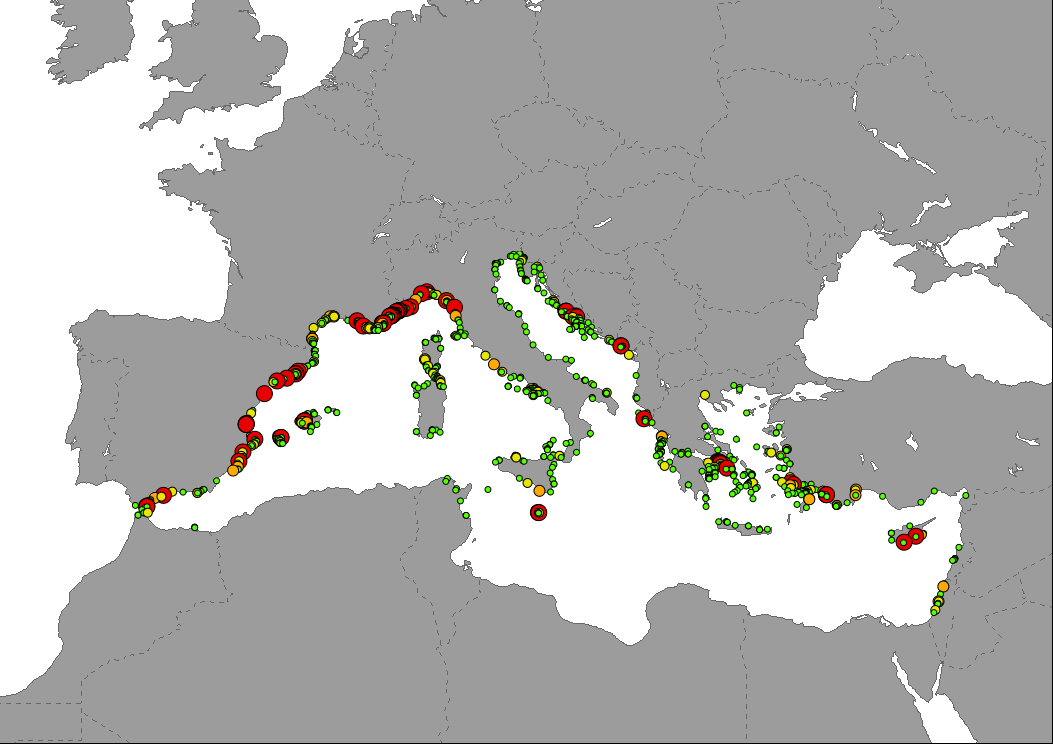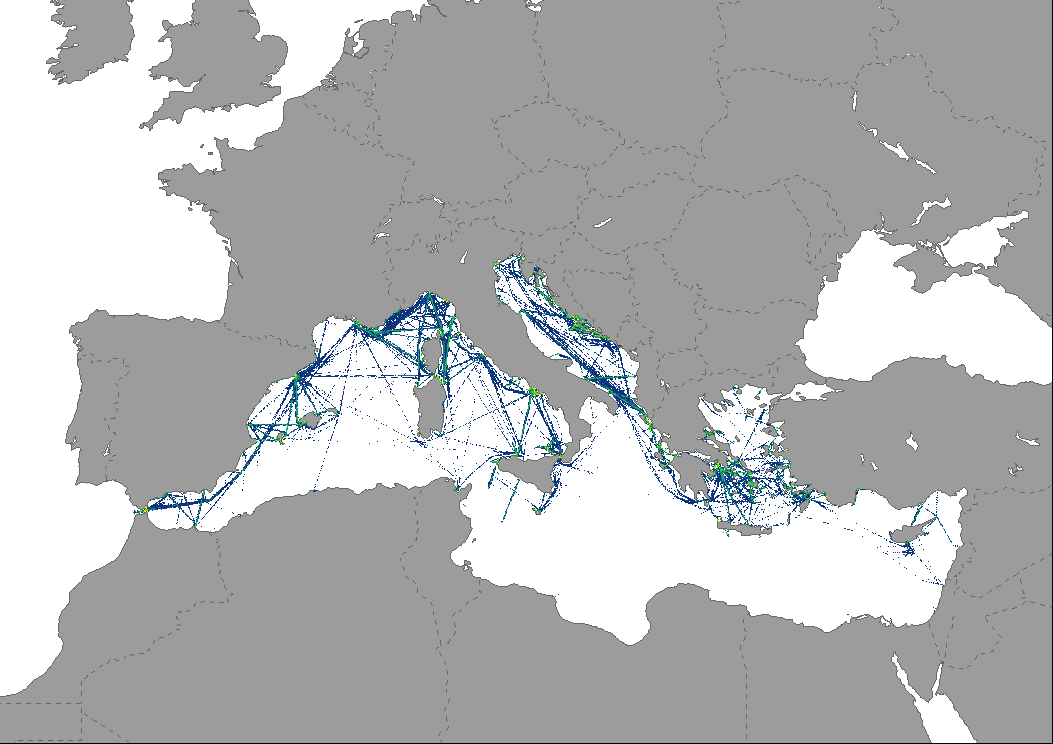Keyword
environmental impact of tourism
22 record(s)
Type of resources
Available actions
Topics
Keywords
Contact for the resource
Provided by
Representation types
Update frequencies
Status
Scale
GEMET keywords
-

Data representing the number of tourism establishments per km2 in Mediterranean countries indicating the capacity of regional tourism infrastructure. Estimation made from a disaggregation of data at NUTS2 (EU countries) or national level (non-EU countries) based on the distribution of accommodation sites available in OpenStreetMap. Countries without data were estimated according to the number of accommodation sites. Last year reported for most non-EU countries and certain regions of France, Spain and Turkey is 2021 (2019 for Egypt and Montenegro).
-

Data showing the number bed-places in per km2 Mediterranean countries indicating the capacity of regional tourism infrastructure. Estimation made from a disaggregation of data at NUTS2 (EU countries) or national level (non-EU countries) based on the distribution of accommodation sites available in OpenStreetMap. Countries without data were estimated according to the number of accommodation sites. Last year reported for most non-EU countries and certain regions of France and Turkey is 2021 (2015 for Egypt).
-

Data showing the number of tourists arrivals per km2 in Mediterranean countries indicating the demand of regional tourism infrastructure. Estimation made from a disaggregation of data at NUTS2 (EU countries) or national level (non-EU countries) based on the distribution of accommodation sites available in OpenStreetMap. Last year reported for most non-EU countries and certain regions of France and Turkey is 2021 (2015 for Egypt).
-

Data shows the number of nights spent at tourist accommodation establishments per km2 in Mediterranean countries. Estimation made from a disaggregation of data at NUTS2 based on the distribution of accommodation sites available in OpenStreetMap.
-

Data representing the cumulative tourism pressure in Mediterranean Sea waters based on the intensity of maritime traffic of passengers vessels and pleasure craft. Traffic intensity was produced using AIS data aggregated at 1km2 by EMODnet and expressed as total time with presence of vessels in each cell throughout the year (hours/km2). Pressure hotspots are highlighted on the map, being classified as: 1) low; areas with cumulative presence of vessels from one hour a day to 4 months (1 quarter); 2) moderate; areas with cumulative presence of vessels between 4 and 8 months (1 to 2 quarters); 3) high, areas with cumulative presence of vessels between 8 months (2 quarters) and one year; 4) very high, areas where there is a cumulative presence of vessels exciding one year, being locations of very high traffic intensity.
-

Vulnerability is calculated based on the coverage of protected areas (PAs) and Important Areas for Biodiversity (IABs) and the cumulative tourism pressure in the Mediterranean Sea waters. PAs and IABs coverage is reclassified in scores, 1 and 2 respectively. These classes and those of cumulative pressure are combined in and reclassified into vulnerability classes according to a vulnerability matrix. IABs include: Key Biodiversity Areas (KBAs), Important Shark and Ray Areas (ISRAs), Important Marine Mammal Areas (IMMAs), Critical areas for the orca population of the Gibraltar Strait and Gulf of Cádiz, Biosphere Reserve, Cetaceans Critical Habitat, Ecologically or Biologically Significant Marine Areas (EBSAs), Particularly Sensitive Sea Areas (PSSAs), Proposed Sites of Community Importance, and World Heritage Sites.
-

Vulnerability is calculated based on the percentage of Key Biodiversity Areas (KBAs) and the cumulative tourism pressure in each region. Percentage of KBAs not protected, with respect to the region, are classified into five groups, from very low to very high, according to the following thresholds: lower than 10%, 10 to 17%, 17 to 30%, 30 to 50% and higher than 50%. Theses classes and those of cumulative pressure are combined into a weighted sum and then reclassified in five vulnerability categories, from very low to very high.
-

Data represents the degree of pressure based on the intensity of sailing vessels and pleasure craft traffic in the Mediterranean Sea (year 2022). The map is based on AIS data aggregated at 1km2 by EMODnet and expressed as total time with presence of vessels in each cell throughout the year. The indicator provides an estimate of the amount of pollution vessels produce (via fuel leaks, oil discharge, waste disposal, etc.), under the assumption that traveling ships primarily affect their immediate waters.
-

Data represents the degree of pressure based on the intensity of passengers vessels, including high speed craft, in the Mediterranean Sea (year 2022). The map is based on AIS data aggregated at 1km2 by EMODnet and expressed as total time with presence of vessels in each cell throughout the year. The indicator provides an estimate of the amount of pollution vessels produce (via fuel leaks, oil discharge, waste disposal, etc.), under the assumption that traveling ships primarily affect their immediate waters.
-

Data showing the percentage of change in the number of tourists arrivals in Mediterranean countries. Data are mostly available by coastal NUTS2 regions for years 2019 and 2022. Data for non European Union countries are available at country level, but only coastal regions are shown on the map to highlight them. Last year reported for Syria and certain regions of Turkey is 2021.
